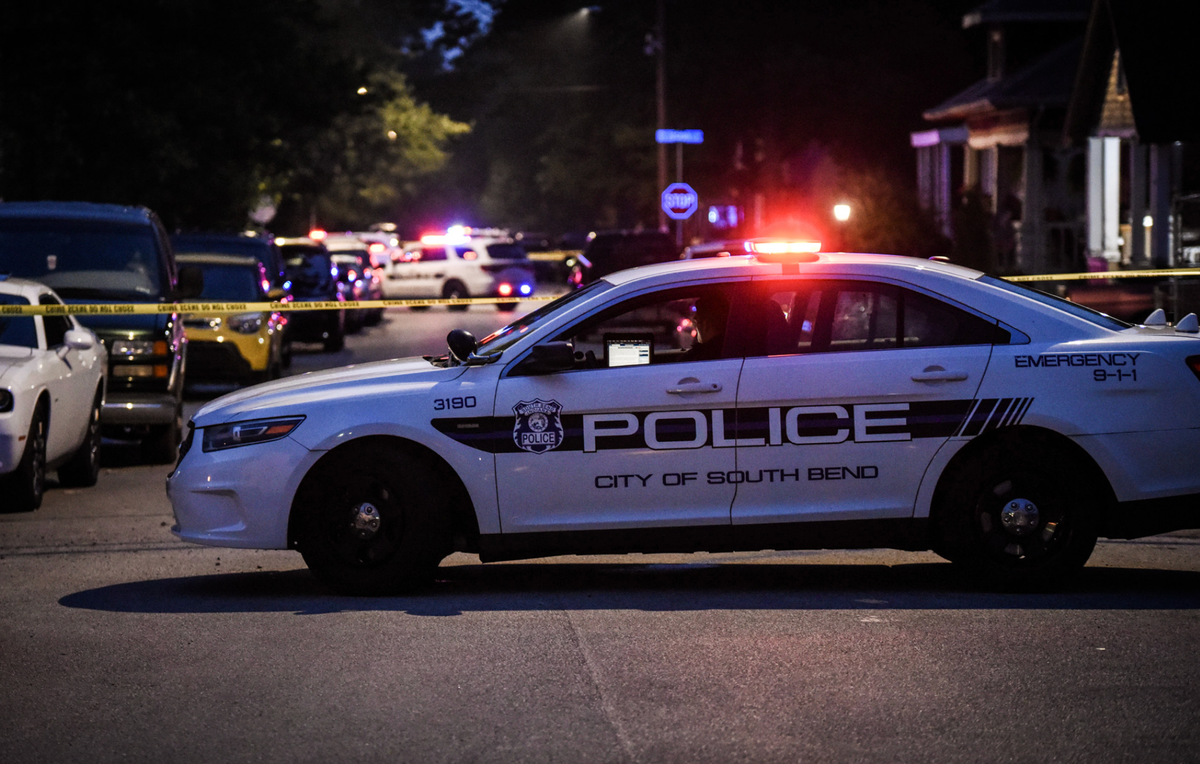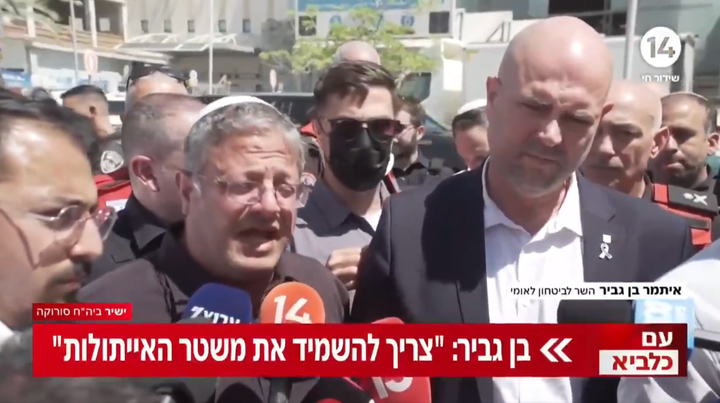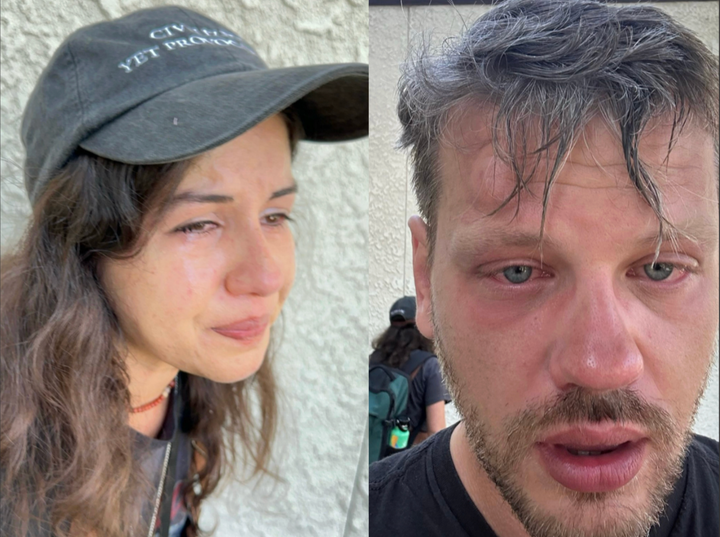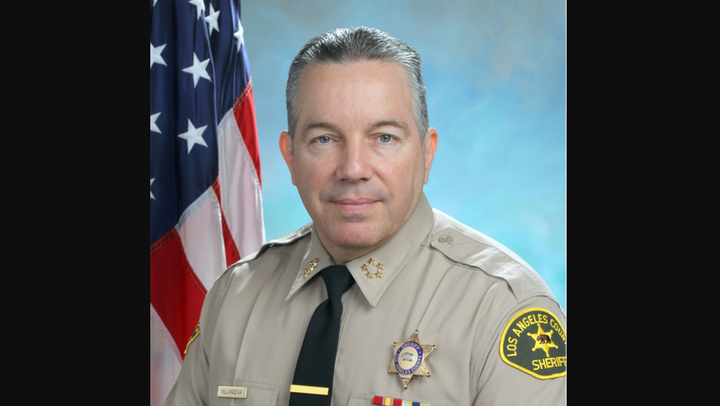US Judge Rules In Favor Of Police 'Buffer Law' Viewed As Threat To Rights Of Journalists
"The law has many legitimate applications,” Judge Damon R. Leichty stated. "Any effect on speech is minimal and incidental only."

The following article was made possible by paid subscribers of The Dissenter. Become a subscriber and support independent journalism in defense of press freedom.
A United States judge in the state of Indiana ruled that a state law, which makes it a crime to enter a 25-foot “buffer” around police, does not violate press freedom or freedom of speech.
“This law has only an incidental effect on the public’s First Amendment right to capture audio and video and otherwise to scrutinize police conduct,” U.S. District Judge Damon R. Leichty declared.
The American Civil Liberties Union of Indiana, which filed the lawsuit in August 2023 on behalf of Donald Nicodemus, a “citizen journalist” in South Bend, Indiana, expressed their disappointment with the federal court decision and indicated that they would appeal.
“We believe this new law gives unbridled discretion to law enforcement officers and invites content and viewpoint-based discrimination,” said Ken Falk, the legal director for the ACLU of Indiana. “With this ruling, police officers will continue to have unchecked authority to prohibit citizens from approaching within 25 feet of the officers to observe their actions, even if the actions of the citizens are not and will not interfere with the police.”
On July 1, 2023, a law was signed that made it a criminal misdemeanor to “knowingly or intentionally” approach within 25 feet (7.62 meters) of police “lawfully engaged in the execution” of the “officer’s duties” after the officer has “ordered the person to stop approaching.”
The "buffer law" was authored by Indiana state representative Wendy McNamara, who drafted the law in response to the 2020 uprising around police who murdered George Floyd in Minneapolis. As McNamara put it, “the public is getting more and more involved in a situation [policing] that’s none of their business.”
Passage of the law was encouraged by the Indiana State Fraternal Order Of Police and the Indiana Sheriffs' Association.
According to the complaint [PDF] submitted by the ACLU of Indiana, Nicodemus regularly publishes videos to his YouTube channel called “Freedom 2 Film,” where he monitors South Bend police. The South Bend police have enforced the buffer law against Nicodemus to “prevent him from getting close enough to be able to observe and record their activities.”
“Nicodemus’s ability to engage in his constitutional right to observe and record the police without interfering with their activities and to broadcast these observations to other persons” is negatively impacted by the law, and therefore, unconstitutional, the ACLU of Indiana argued.
Allegedly, on July 20, 2023, a shooting was reported in the city of South Bend. Nicodemus livestreamed the response to the incident to his YouTube channel. An officer measured 25 feet and ordered Nicodemus and others to step back. About 12 minutes later, another officer ordered Nicodemus and others to step back another 25 feet.
“Officer Veal threatened that those on the corner, including Mr. Nicodemus, would go to jail if they did not move back another 25 feet, stating that there was a ‘new law,’” the complaint recalled. “Officer Veal apparently interpreted [the buffer law] as allowing police to repeatedly push persons back 25 feet at a time based solely on a police officer ordering this.”
Only because Nicodemus was threatened with arrest did he move further from the area and across the street.
Judge Leichty brushed aside all concerns that the law had infringed upon Nicodemus’ rights and would continue to infringe upon the rights of journalists, like Nicodemus, to record police.
“The law has many legitimate applications,” Leichty contended. “Any effect on speech is minimal and incidental only, particularly in this day and age of sophisticated technology in the hands of most any citizen and at a modest distance of 25 feet.”
Whether it was the “wisest iteration of a law that promotes the safety of officers and citizens” and serves other “legitimate interests,” it is not “constitutionally overbroad,” the judge added.

Judge Leichty seemingly ignored the genesis of the law and insisted the law was not “directed toward speech but encroachment.”
“The law affords law enforcement officers the uninterrupted and unimpeded ability to do their jobs, including as examples the need to investigate, secure evidence and statements, and conduct other official police business safely,” Leichty maintained. “It protects the integrity of government processes as well as suspects, victims, witnesses, and other citizens interacting with law enforcement from harm."
Laws already existed to ensure police can secure crime scenes without interference. The Indiana buffer law has a different purpose—to reduce the likelihood that videos will surface that expose police to scrutiny and outrage citizens. And it gives police the authority to arbitrarily threaten just about anyone with arrest if they do not want someone near them.
In October 2023, a coalition of media organizations including the Indianapolis Star, along with the Reporters Committee for Freedom of the Press (RCFP), the Indiana Broadcasters Association, and the Indiana Professional Chapter of the Society of Professional Journalists, sued the state of Indiana.
The coalition alleged that the law violated the First Amendment and posed a “serious threat to the constitutional rights of journalists in Indiana.”
As the complaint [PDF] asserted, the buffer law allows police to bar journalists “from reporting—for any reason or no reason—on an enormous diversity of events of public interest, from a parade or political rally to an arrest or use of physical force.” The buffer law contains no exemptions for members of the press.
“In Miami Beach, Florida, enforcement of a comparable—but narrower—ordinance was suspended less than three months after its enactment because arrest data showed that a majority of arrests under the law ‘were of people who’d been using their phones to record officers,’” the coalition noted.
Arizona adopted a similar buffer law in 2022 that infringed upon freedom of the press and the public’s right to record police. It made it a crime to film within eight feet (2.44 meters) of police.
The ACLU of Arizona and 10 media organizations sued the state of Arizona, and in July 2023, a settlement [PDF] was reached that permanently blocked police and the state of Arizona from enforcing the law against anyone because it was unconstitutional.
By allowing the Indiana buffer law to be enforced, the U.S. court in Indiana ensured that videos, which could spark police accountability, are less likely to be recorded in the state.
Like the RCFP pointed out, “Any one of the police officers present at the scene of Floyd’s murder could have asked Darnella Frazier, who recorded the video, to step back and if she refused, they could have arrested her for violating the [buffer] law.”
“Indeed, Tou Thao, an officer at the scene of Floyd’s murder, was recently found guilty of aiding and abetting second-degree manslaughter for holding bystanders back and ‘prevent[ing] an off-duty Minneapolis firefighter from rendering the medical aid Floyd so desperately needed.’ If Thao had the express authority to arrest Frazier, her video may never have existed."




Comments ()